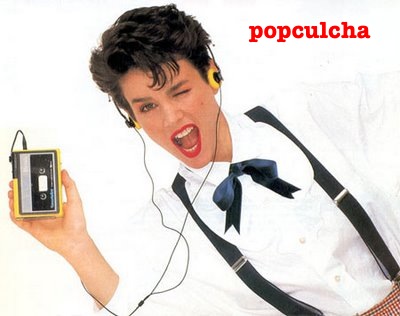courtesy Jezebel. an excerpt:
"So I'm not allowed to have a genuine interest in another culture?!!?!??!"
First of all, privileged dickweeds wearing Urban Outfitters "Navajo" panties, I didn't realize that you excavated those in your anthropological field work. My bad. Carry on. And second of all, again, you "can" do whatever the fuck you want. You "can" wear whatever you want, say whatever you want, and think whatever you want about whatever you want. All the time! Yaaay! But if a group of people comes to you and says, "This thing that you are doing is hurting us," and you keep doing it for fun, then you are a dickweed! Like, you know we had an actual genocide here, right? A deliberate extermination of human beings? Right where your house is? So maybe just err on the side of sensitivity.
Saturday, April 28, 2012
Sunday, April 22, 2012
Dick Clark and the integration of 'American Bandstand'
"Most of the obituaries of Clark, who took over Bandstand in 1956, have noted that the show used rock and roll to break down racial barriers, mostly because that is the story Clark told. But that is where his legacy gets complicated. While the nationally televised dance program hosted a number of prominent black performers, the show regularly blocked black teenagers from its studio audience until it moved from Philadelphia to Los Angeles in 1964. The image of teenagers that American Bandstand popularized bore little resemblance to the racial diversity of American teens."
Matthew F. Delmont, writing in the Washington Post, April 22, 2012. Read the rest of the article here.
Matthew F. Delmont, writing in the Washington Post, April 22, 2012. Read the rest of the article here.
"Viewers would have had little idea that African Americans made up nearly 30 percent of Philadelphia's population in this era or that black teens developed many of the dances that American Bandstand popularized nationally."
Tuesday, April 17, 2012
Is Television "tell-a-lie-vision," "Death of a nation, breeding ignorance and spreading radiation"?
The effects of television have been questioned and critiqued almost from the moment that this medium appeared. And in particular, its negative effects on children have been widely assumed. (My mother banned the watching of the "Popeye" cartoon in our house in the mid-fifties, after reading that it might insult violence in children. So we watched the show at our neighbors' house.)
Anti-t.v. sentiment is particularly prevalent among the middle-class would-be literati. Sometimes I think the only people in the US who don't own television sets are university professors, and the Honors students I teach are likely to claim that they don't watch t.v. And although I appreciate how Five Percent hip-hoppers break the word television down to its basics ("tell-a-lie-vision") and I love the Michael Franti-led Beatnigs' 1988 song "Television" ("TV is the reason why less than ten percent of our nation reads books daily"), I couldn't live without my Mad Men and my Daily Show and my Breaking Bad.
Here's an article from the Wall Street Journal that argues that t.v. might, under certain conditions, have positive effects. (Although I'm not sure that could ever be the case with Fox News.) Here's an excerpt:
University of Chicago Graduate School of Business economists Matthew Gentzkow and Jesse Shapiro aren't sure that TV has been all that bad for kids. In a paper published in the Quarterly Journal of Economics this year, they presented a series of analyses that showed that the advent of television might actually have had a positive effect on children's cognitive ability.
The two are part of a tight-knit group of young economists using statistical techniques to examine how television affects society. The group's research suggests TV enabled an earlier generation of American children in non-English-speaking households to do better in school, helped rural Indian women to become more independent and contributed to lowering Brazil's fertility rate.
Monday, April 16, 2012
Consumption and US voting trends
Amazing article from the New York Times, April 16. Viewers of the Golf Channel trend strongly Republican and have a very high turnout rate. Viewers of VH1 trend strongly Democrat and have a very low turnout rate. Those who eat at Cracker Barrel trend strongly Republican and turn out in big numbers. Those who eat at Church's Chicken are low-turnout, strong Democrats. Amstel Light drinkers are strongly Republican, Cognac drinkers strongly Democrat. And on it goes. Here's one of the very interesting charts.
Scotch, as the article observes, is a 'centrist' drink.
Subscribe to:
Posts (Atom)




